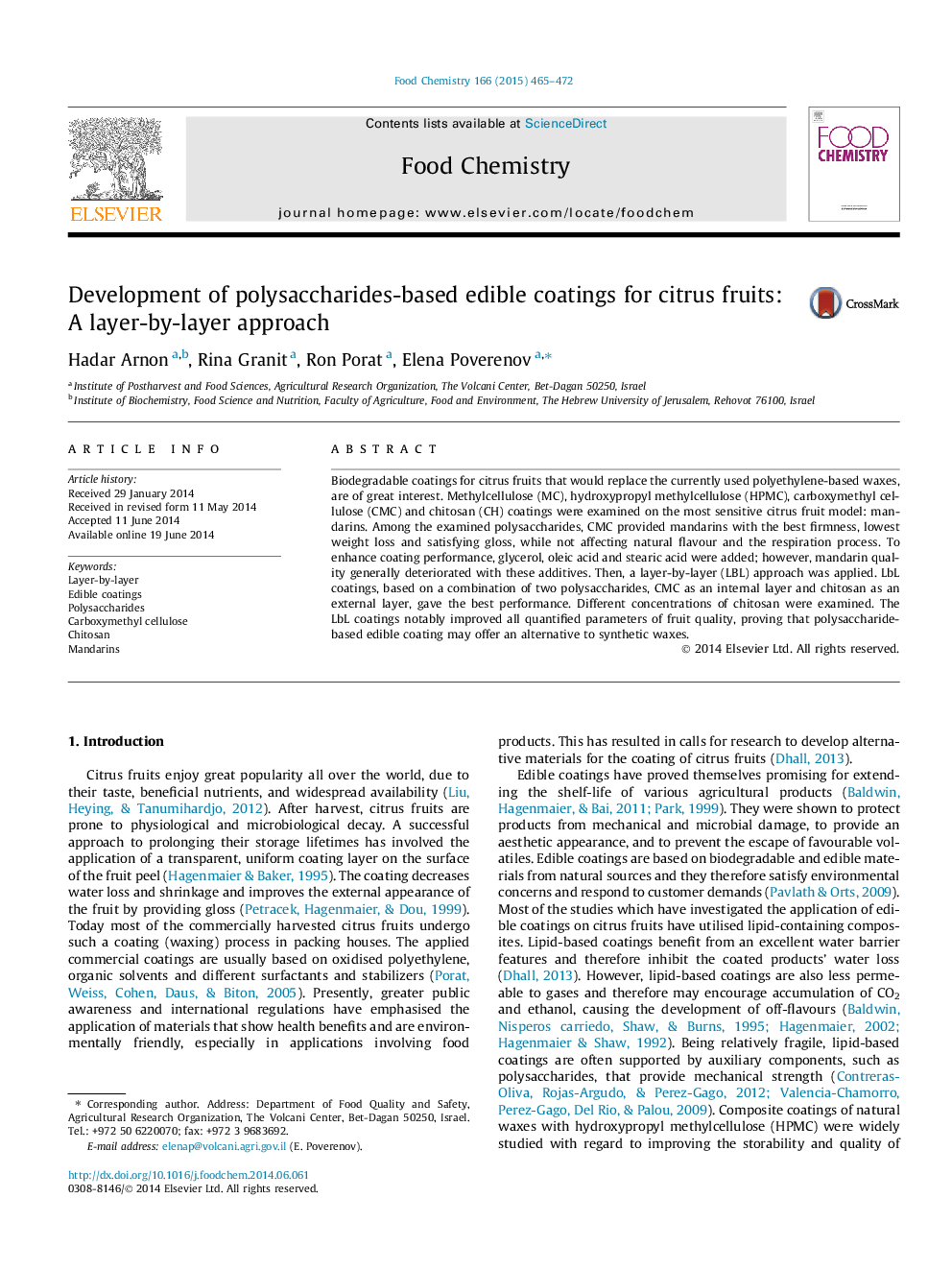| Article ID | Journal | Published Year | Pages | File Type |
|---|---|---|---|---|
| 7596139 | Food Chemistry | 2015 | 8 Pages |
Abstract
Biodegradable coatings for citrus fruits that would replace the currently used polyethylene-based waxes, are of great interest. Methylcellulose (MC), hydroxypropyl methylcellulose (HPMC), carboxymethyl cellulose (CMC) and chitosan (CH) coatings were examined on the most sensitive citrus fruit model: mandarins. Among the examined polysaccharides, CMC provided mandarins with the best firmness, lowest weight loss and satisfying gloss, while not affecting natural flavour and the respiration process. To enhance coating performance, glycerol, oleic acid and stearic acid were added; however, mandarin quality generally deteriorated with these additives. Then, a layer-by-layer (LBL) approach was applied. LbL coatings, based on a combination of two polysaccharides, CMC as an internal layer and chitosan as an external layer, gave the best performance. Different concentrations of chitosan were examined. The LbL coatings notably improved all quantified parameters of fruit quality, proving that polysaccharide-based edible coating may offer an alternative to synthetic waxes.
Related Topics
Physical Sciences and Engineering
Chemistry
Analytical Chemistry
Authors
Hadar Arnon, Rina Granit, Ron Porat, Elena Poverenov,
